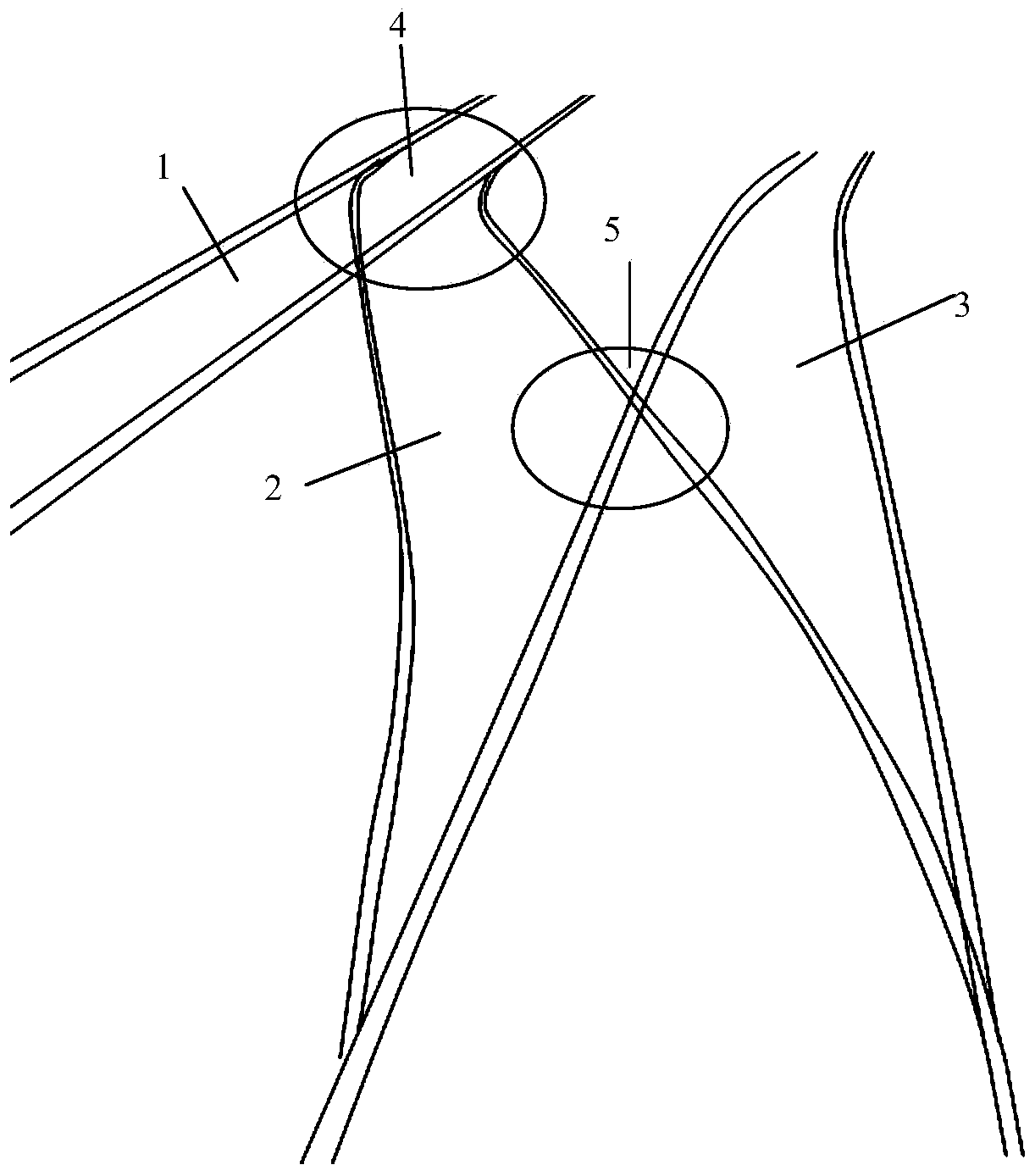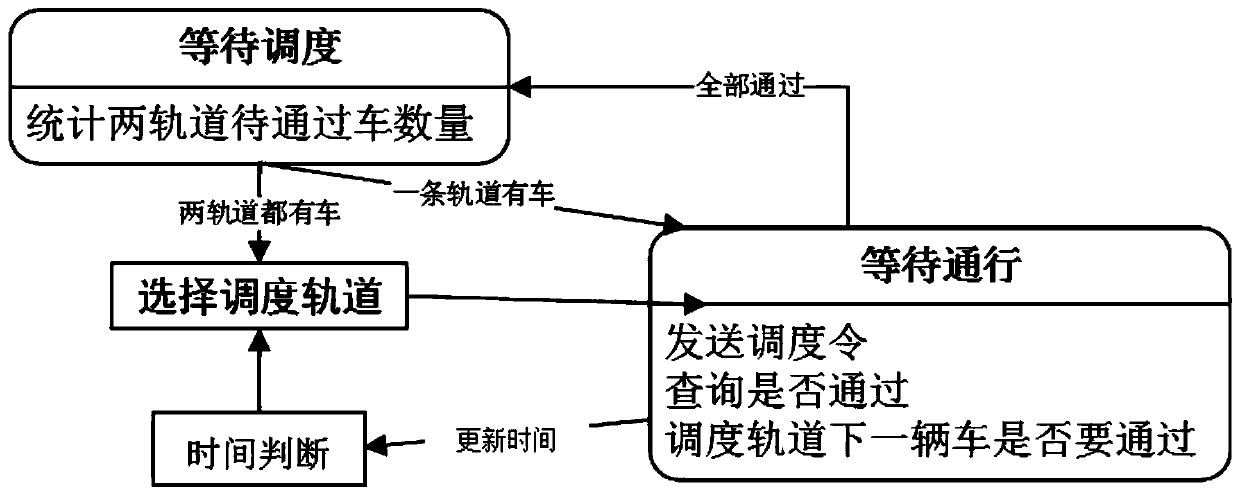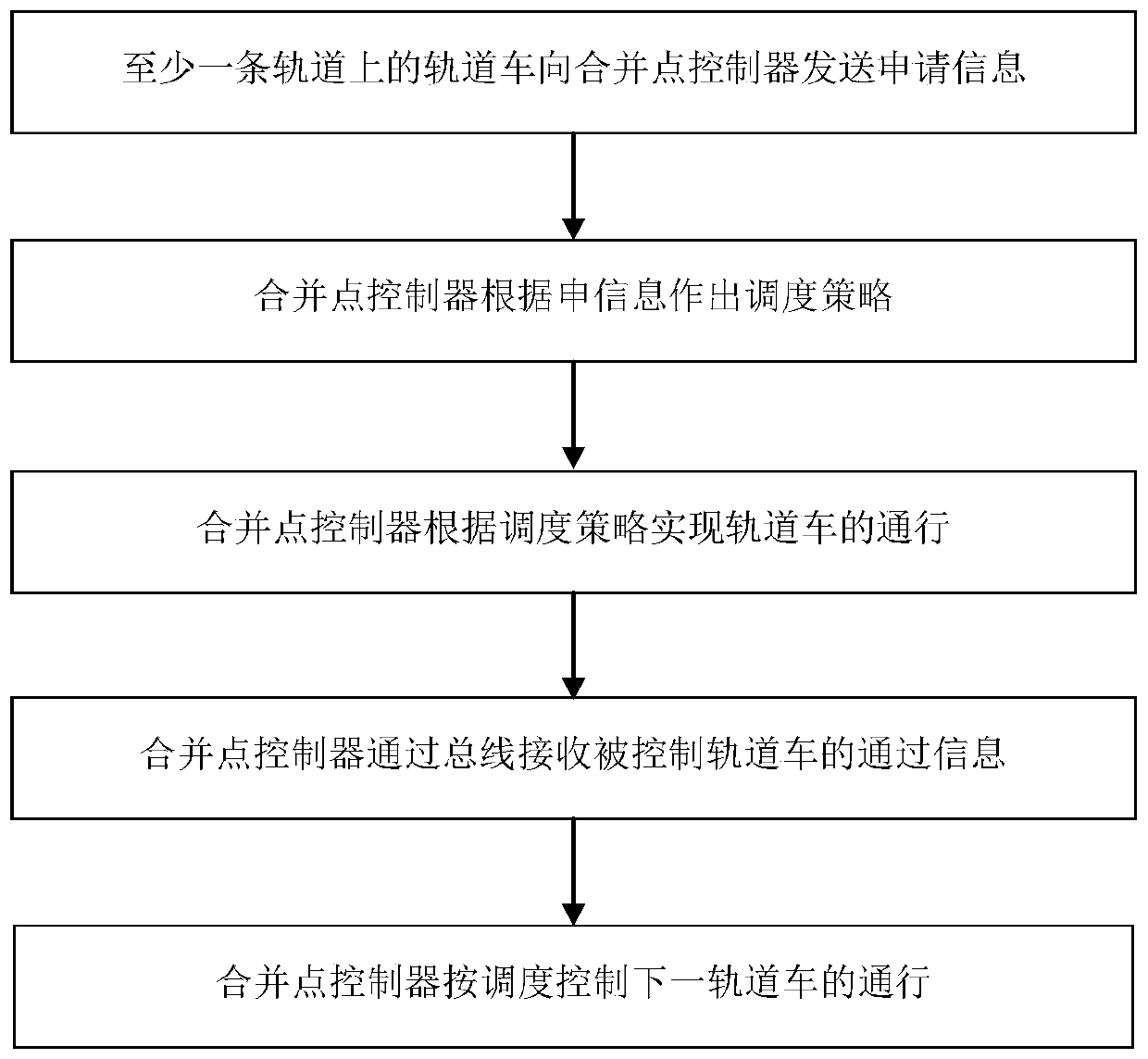Intelligent rail car merging point scheduling method and intelligent rail control system
A dispatching method and rail vehicle technology, applied in the field of rail transit, can solve problems such as reduced tracking target distance, collision, sudden braking, etc., and achieve the effect of reducing waiting time and ensuring traffic safety
- Summary
- Abstract
- Description
- Claims
- Application Information
AI Technical Summary
Problems solved by technology
Method used
Image
Examples
Embodiment 1
[0041] The main description of this implementation is as follows: Figure 4 The shown intelligent system only controls the control process of the rail cars on a single track passing through the merge point, and the specific steps are as follows:
[0042] 1. The vehicle equipment on the track sends an application message to the first merge point controller;
[0043] Vehicle A and vehicle B on the first track 1 are driving, and both need to pass the first merge point 11; There are vehicles running on track 2 but the vehicle at the front of the second track does not want to pass through the first merge point 4, because the vehicle at the front of the second track 2 has not sent the application information, it will be considered that there is no vehicle on the second track 2 It is expected to pass the first merging point, because once the control gives the second track 2 a green light, the frontmost vehicle on the second track that does not want to pass through the first merging ...
Embodiment 2
[0054] The difference between this implementation and Embodiment 1 is that vehicles on both tracks have vehicles expecting to pass through the first merge point, such as Figure 5 Shown is a schematic diagram of the principle structure of the intelligent track system, including three tracks and the first merging point 4, the three tracks are the first track 1, the second track 2 and the third track 3, and there is a vehicle A driving on the first track 1 And vehicle B, there are vehicle C and vehicle D running on the second track 2. After a period of time, there is a new vehicle E on the second track 2, and vehicle F is running on the third track.
[0055] The specific scheduling steps are as follows:
[0056] 1. The vehicle equipment on the track sends an application message to the merge point controller;
[0057] Vehicles A and B on the first track 1 need to pass through the first merge point 4, and vehicles C and D on the second track 2 need to pass through the first merge...
PUM
 Login to View More
Login to View More Abstract
Description
Claims
Application Information
 Login to View More
Login to View More - R&D
- Intellectual Property
- Life Sciences
- Materials
- Tech Scout
- Unparalleled Data Quality
- Higher Quality Content
- 60% Fewer Hallucinations
Browse by: Latest US Patents, China's latest patents, Technical Efficacy Thesaurus, Application Domain, Technology Topic, Popular Technical Reports.
© 2025 PatSnap. All rights reserved.Legal|Privacy policy|Modern Slavery Act Transparency Statement|Sitemap|About US| Contact US: help@patsnap.com



